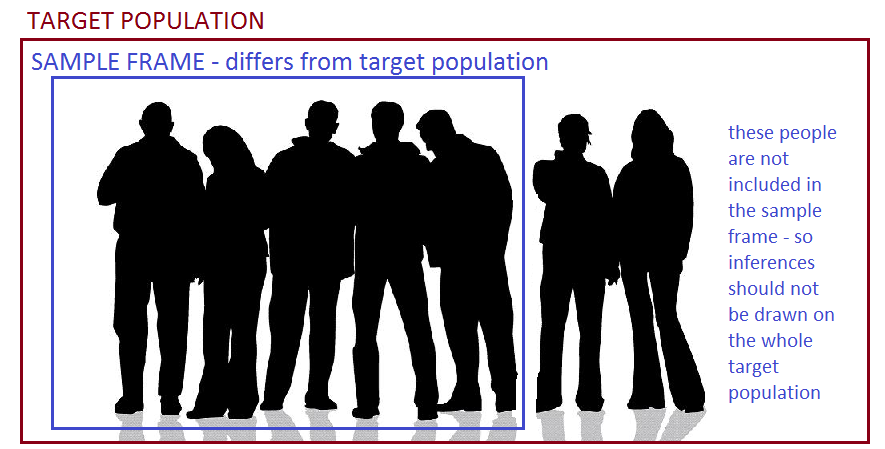The target population in a survey is the specific set of people or other sample units about whom information is sought. For example, school authorities may wish to find out the food preferences of students who use the school cafeteria. In this case, the target population would be all the students who might eat at the cafeteria.
A survey can only give reliable information about the target population if the sample is drawn in an unbiased way from that population. This is done by a selection process involving randomisation. There are several variants of such a process, the simplest being a simple random sample.
It is important to distinguish what is known as the sampling frame from the target population. Ideally, these should be the same but they may not be, due to design features in the survey. The sampling frame is the actual set of units from which the sample could be drawn.

The sampling frame differs from the target population when some members of the population have no chance of being included in the survey sample.

Inferences based on survey data should be recognised as being strictly about the units in the sampling frame and not necessarily about the target population, unless the two are identical.
Example
A market research organisation, wishing to obtain information about the shopping habits of the adult population of Australia, decides to make a random selection of postcodes and then to dial every residential telephone number within the chosen postcode areas.
This type of sampling is called cluster sampling. The target population is the set of adults who make decisions affecting shopping. The sampling frame, however, is restricted to people who have a listed landline telephone number. The sampling frame is further restricted to those people who are willing to participate in the survey.
Worked Examples
QUESTION 1
A biscuit manufacturer conducted a survey to determine consumers' thoughts on new packaging on one of the types of biscuits they manufactured. The target population for the survey is:
all the people who purchase that biscuit product from supermarkets
Aall the people who purchase that biscuit product directly from the factory
Ball the people who purchase any type of biscuit
Call the people who purchase that biscuit product
D
QUESTION 2
A construction company wants to know the opinions of residents in a certain suburb on the construction of a new road through the area. The company surveys $35$35 residents from the suburb. The target population is:
all the residents in the city
Aall the residents of the suburb
Bconstruction workers
Cthe $35$35 residents surveyed
D
QUESTION 3
A restaurant wanted to determine if patrons are happy with the service, so they surveyed $40$40 customers that ate at the restaurant between $3-5$3−5pm. The target population is:
the $40$40 customers surveyed
Acustomers of all restaurants in the street
Ball the customers of the restaurant
Ceveryone working at the restaurant
D